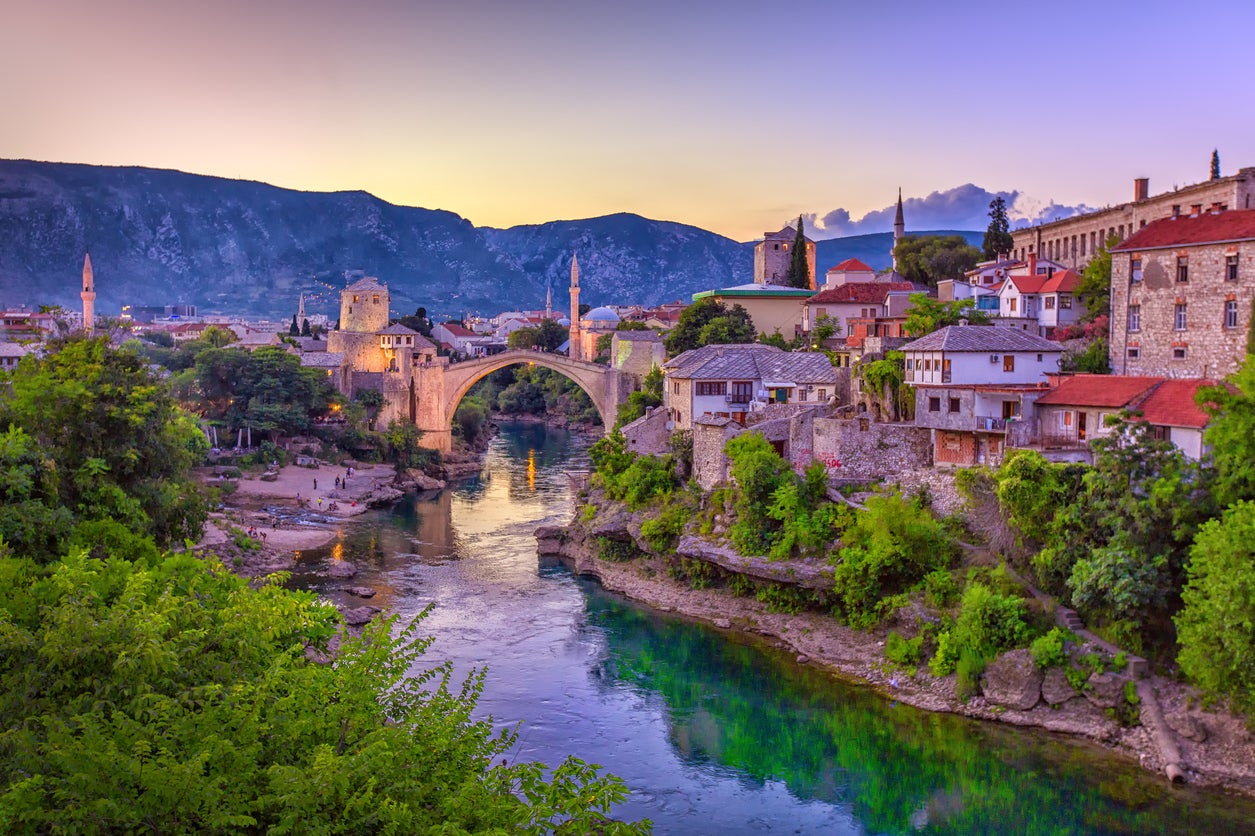The Stari Most: Can restored stones bridge the most bitter of divides?
Continuing his series reflecting on memorable tracks and pathways, Will Gore recalls a trip to Mostar, eight years after the end of Bosnia’s brutal war


There are many bridges over the river Neretva in Mostar. But there’s only one that visitors really want to see: Stari Most, the “old bridge”, which isn’t so old in fact.
For anyone in the UK over the age of about 35, the arched bridge is best known for its destruction. When the former Yugoslavia descended into hideous civil war in the early 1990s, the rest of Europe watched on in near disbelief as former neighbours set out to slaughter one another.
The ancient Ottoman crossing in Mostar, which had stood for more than four centuries, became a media-friendly metaphor for the conflict – an edifice which had once united the town’s east and west, bludgeoned to rubble by artillery fire, as Croats and Bosniaks, former allies against Serb forces, turned viciously on one another.

Ten years after Stari Most tumbled into the Neretva, I found myself in Mostar, advising on media regulation. Bosnia’s press council was a small beacon of cooperation between the country’s three constituent peoples, which were largely held together by the will of the international community. In its own way, it showed what was possible.
Even though the war in Bosnia had come to an end in late 1995, the signs of it were still everywhere. In Sarajevo, which had been besieged for nearly four years, there was barely a building that did not bear the scars of artillery or gun fire, unless it was new of course. Mostar, in the Herzegovina region of the country, remained haunted by the imprint of war too.
The hotel in which the press council was holding its meetings on that occasion (its members gathered in a different town every few months to demonstrate their federal credentials), was not far from the river. During the evening I ventured out alone to search for the bridge which I had seen being shot at and destroyed on TV news bulletins a decade earlier.
It was dusk outside but warm. The street was quite narrow, with buildings on both sides still in the process of being patched up. A cat stalked across the road ahead of me and was dozy enough not to notice an old man on a bicycle careering towards it – perhaps it had been deafened in the war.
As I let out an involuntary cry, the bike’s front wheel went directly over the cat’s hindquarters. I winced; but the cat, after a dramatic roll, went on its way – as did the untroubled cyclist.
Turning left, on cobbled stones, I came to the bridge. Its reconstruction was well under way – indeed it would reopen a year later – but it was sufficiently hidden behind boards and scaffolding that I could see almost nothing of it. On the wall of a building close to it, someone had daubed in large letters – in English – “How do you sleep?”
For years, in that place, residents had slept – if they slept at all – to sounds which most of us have never had the misfortune to listen to. The sounds of war, a war begotten of nationalism in a city which had arguably been the most ethnically integrated in all of Yugoslavia.
We should never take a good night’s sleep, or peace, for granted.
Join our commenting forum
Join thought-provoking conversations, follow other Independent readers and see their replies
Comments